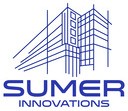The concrete industry, considered a labor-intensive and traditional sector, is undergoing the revolution of advanced technology. Several innovations like automation, artificial intelligence, machine learning, and the use of smart material are revolutionizing the way concrete is applied, maintained, and produced. Ultimately, use of these technologies is improving efficiency and sustainability, and reducing waste of material.
With the help of these advancements in technologies, companies can monitor the progress in real time, optimize resource usage, and predict maintenance needs. The demand for eco-friendly and durable infrastructure is growing with an increase in the adaptation of advanced technologies in the concrete industry.
Let’s explore together how these advanced technologies are solidifying the foundation of today’s infrastructure.
The Transformation of The Concrete Industry
The concrete industry had gone through many changes, but concrete remained a fundamental material in construction throughout its evolution. In today’s modern technologies, the most effective changes happened with advancements in the industry.
It introduced enhanced properties, new compositions, and innovative methods that were once beyond human imagination.
From its early origins to today’s modern technologies, the concrete industry has evolved continuously with time.
The innovations in technologies are not only improving the durability, but they are also contributing to optimizing the construction process while making it eco-friendly and sustainable. However, it is always best to consult concrete experts for making better choices in the long term.
Sustainable Concrete Approaches
With the rapid increase in the adoption of modern technologies, the industry is looking forward to choosing more sustainable concrete practices to minimize the environmental impact. These advancements in technologies are marking a new era of eco-friendly and sustainable environments. Eco-friendly concrete options have become a standard now that showcase a deep commitment to sustainability and technological progress.
The use of alternatives like reclaimed concrete, crushed glass, and plastic reduces resource depletion. The adoption of this approach not only reduces waste from landfills but also exceeds the traditional concrete mixtures.
- Adopting post-consumer glass practice improves concrete’s thermal insulation properties and reflectivity.
- Reclaimed concrete aggregate ( RCA) transforms demolition waste into reusable materials that promote efficient resource use.
- Using recycled plastic helps to reduce the overall weight and improves durability.
Eco-Friendly Concrete
After addressing the cement manufacturing contributing to CO₂ emissions in environments, industries are now looking towards more sustainable and eco-friendly options like green concrete to avoid harmful impacts on the environment. This green concrete includes advanced modern techniques like carbon capturing that help certain types of concrete absorb CO₂ efficiently.
This eco-friendly concrete is used to help maximize durability, ensure that the structures last longer, and have fewer repairs occur.
3D Printing in Concrete
Green Building Materials
Due to its rapid construction speed, it is convenient for emergency housing construction and affordable projects that are completed in days instead of weeks. With the support of Construction Engineering Services, this innovation enhances durability, utilizes recycled materials, and prevents excess waste.
Self Healing Material
The self-healing method is revolutionizing the concrete industry with its unbelievable results. In this method, material is used to repair its own cracks, and ultimately it extends the life of concrete and avoids repair costs. The results are achieved by using bacteria, capsules of healing agents, and chemical reactions that activate when cracks occur. For example, when water enters the crack, bacteria present in concrete produce limestone to fill the gap naturally. Other methods, like capsules filled with adhesive, break open and create a bond whenever a crack occurs.
Ultra High Performance Concrete
Ultra-high-performance concrete is known for its resistance and durability against harsh environmental conditions. UHPC includes a dense microstructure incorporating steel fibers to ensure strength and longevity.
It is used in projects like bridges, high-rise buildings, and precast elements where strength and less maintenance are required.
This is also used by sidewalk repair companies due to its durability to withstand harsh weather conditions, chemical exposure, and heavy loads, making it a unique game changer.
Project Management Software
The use of project management software is transforming the concrete industry. It ensures timely delivery, quality of work, and smooth communication between teams. These digital tools allow engineers, project managers, and contractors to track progress, schedule tasks, allocate resources, and manage budgets in real time to avoid delays and extra costs.
Predictive Analysis and Machine Intelligence
Industry is rapidly shifting towards adapting advanced smart equipment to enhance efficiency and safety and increase machinery lifespan as a move from traditional construction methods towards technology-driven practices. This movement is making the construction process reliable and efficient.
The use of modern technologies makes the construction process smoother by allowing contractors and teams to monitor equipment and detect issues before they occur to ultimately avoid delays and extra costs.
- Machine learning can study and manage how equipment is used, schedule maintenance in advance, and reduce unexpected delays and failures.
- Predictive analysis detects problem areas and maintains a streamlined workflow of the construction process to ensure its timely delivery and set budget.
- Smart equipment uses sensors to communicate updates with operators in real time to ensure on-site safety.
Conclusion
The rapid adoption of modern technologies is moving the concrete industry toward efficiency, durability, and sustainability. Advanced technologies like eco-friendly concrete, 3D printing, and self-healing materials are not only contributing to efficiency and durability, but they are also reducing environmental impact.




